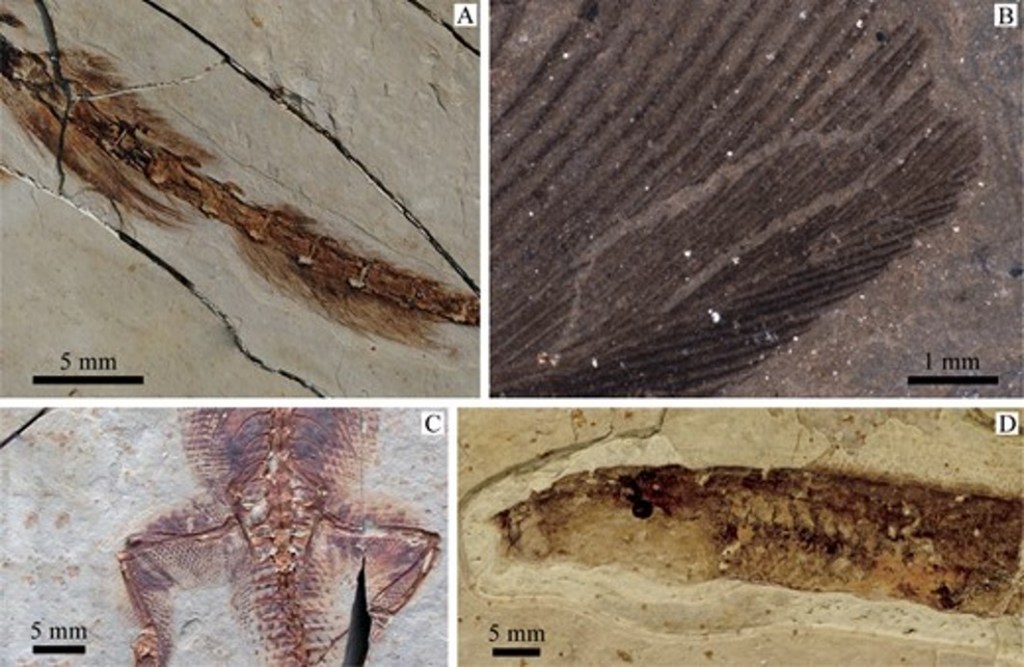Listen to Episode 152 on PodBean, YouTube, Spotify, or wherever you listen to your favorite podcasts!
For the last few decades, a seemingly non-stop stream of famous fossils have been produced by excavations in China, and most of them are coming from the same region. This episode, we discuss the deep history, the incredible fossils, and the abundant research opportunities of the Jehol Biota.
In the news
Patterns of evolution in birds are strongly influenced by habitat
Early dinosaurs had inconsistent growth patterns
Mammals with certain lifestyles evolve more rapidly
Fluorescent shells reveal the colors of fossil scallops
Very Famous Fossils
The Jehol Biota is a diverse fossil ecosystem from the Early Cretaceous of northeastern China. The Biota (this word refers to the fossils themselves) includes plants and animals from the Jiufotang, Yixian, and Huajiying Formations, as well as some other nearby fossil deposits, depending on the definition you’re using. The fossils range from 135-110 million years old, and they include some of the most well-preserved and most famous fossils ever found.

Top left: The fish Lycoptera. Image from Dwergenpaartje, CC BY-SA 3.0
Top right: The dinosaur Sinosauropteryx. Image from Sam, CC BY-SA 2.0
Bottom left: The scorpionfly Jeholopsyche. Image from Ren et al. 2011, CC BY 3.0
Bottom right: The dinosaur Psittacosaurus. Image from Vinther et al. 2016
Some of the earliest fossils to be scientifically described from the Jehol Biota were fish, insects, and other invertebrates identified in the 1800s and early 1900s. In the 1990s, the Jehol region became world-famous with the discovery of the world’s first feathered non-bird dinosaurs. Since then, the Jehol Biota has produced a long list of incredible fossils that have made headlines, such as Sinosauropteryx, the first dinosaur found with feathers and one of the first dinosaurs to have its coloration determined; Yutyrannus, a feathered tyrannosaur and the largest feathered animal ever discovered; Repenomamus, the first Mesozoic mammal ever known to have eaten dinosaurs; Archaefructus, which might be one of the oldest known flowering plants; and that famous specimen of Psittacosaurus which preserves everything from quills to colors to cloaca; just to name a few!

Top left: Tail feathers of the dinosaur Sinosauropteryx; Top right: Flight feather of the bird Confuciusornis
Bottom left: Skin of the lizard Liushusaurus; Bottom right: Eyes, muscles, and gonads of the lamprey Mesomyzon. Images from Zhou 2014
Hundreds of fossil species have been identified among the Jehol Biota, including plants, invertebrates, and vertebrates, providing excellent resources for studies on insects, early birds, early flowering plants, pterosaurs, and more. The preservation of soft tissues and minute details makes these fossils invaluable for research into the evolution, lifestyles, and anatomy of these groups.

Top left: Seeds in the stomach of the bird Jeholornis; Top right: Gizzard stones in the stomach of the bird Archaeorhynchus; Bottom left: Embryo of an enantiornithine bird; Bottom right: Embryo of a pterosaur.
Images from Zhou 2014

Learn More
Zhou 2014. Overview of Jehol Biota discoveries. (Technical, open access)
Xu et al 2021. A more recent review. (Technical, paywall)
O’Connor et al 2019. Microraptor gut contents and the Jehol Biota food web. (Technical, open access)
Zhang et al 2010. Evolution of insect diversity in the Jehol Biota (technical, open access)
—
If you enjoyed this topic and want more like it, check out these related episodes:
- Episode 37 – Evolution of Birds
- Episode 89 – The Burgess Shale
- Episode 127 – The Hell Creek Formation
- Episode 137 – Fossilization
We also invite you to follow us on Twitter, Facebook, or Instagram, buy merch at our Zazzle store, join our Discord server, or consider supporting us with a one-time PayPal donation or on Patreon to get bonus recordings and other goodies!
Please feel free to contact us with comments, questions, or topic suggestions, and to rate and review us on iTunes